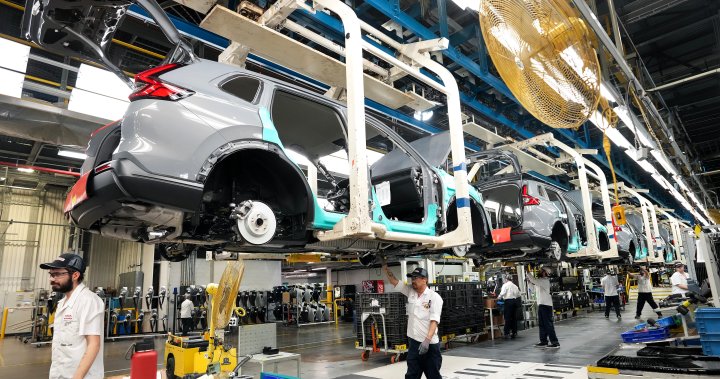Canada
Trump wants to replace Canada’s car industry. How much would that cost?

Title: The Impact of Trump’s Tariffs on Canada’s Auto Industry
Introduction: The Canadian Auto Industry in the Spotlight
Canada’s automotive sector is a cornerstone of its economy, employing thousands and contributing significantly to national revenue. Recently, it has come under scrutiny due to U.S. President Donald Trump’s tariff threats, aimed at reshoring manufacturing back to America. Trump’s vocal desire to revitalize Detroit’s auto industry has raised concerns about the potential disruption to the integrated North American automotive supply chain. This article explores the historical roots, economic implications, and strategic importance of Canada’s role in the global auto industry, highlighting the challenges posed by protectionist policies and the potential consequences for consumers and manufacturers alike.
Historical Integration: The Foundation of the Auto Industry
The Canadian auto industry’s integration with the U.S. began in 1965 with the Canada–United States Automotive Products Agreement, known as the Auto Pact. This agreement eliminated tariffs on vehicles and parts, fostering a seamless cross-border supply chain. The North American Free Trade Agreement (NAFTA) in 1994 expanded this collaboration, which continues under the Canada-United States-Mexico Agreement (CUSMA). This long-standing partnership has created a complex network of manufacturers and suppliers, making the industry deeply interdependent. Uprooting this network would be highly disruptive, with significant economic and logistical challenges.
Economic Consequences: The High Cost of Reshoring
The economic ramifications of imposing tariffs on Canadian vehicles are substantial. Reshoring manufacturing to the U.S. would require massive investments, with estimates suggesting billions of dollars in plant closures and reconstruction costs. For instance, moving just nine plants could cost up to $4.5 billion, with rebuilding in the U.S. potentially exceeding $18 billion. These figures underscore the financial burden on companies, which could lead to bankruptcies during the transitional period. Additionally, the higher labor and production costs in the U.S. compared to Canada further complicate the feasibility of reshoring.
Strategic Benefits: Beyond Economic Investments
Canada’s auto industry offers more than economic value; it provides strategic advantages in the global market. The country’s highly skilled workforce and investments in electric vehicle (EV) technology position it as a crucial player in the EV revolution. With China dominating 80% of advanced battery inputs, Canada’s mineral resources are vital for Western Hemisphere production. Collaborative efforts between the U.S., Canada, and Mexico are essential for competing with China’s EV dominance, highlighting the importance of maintaining integrated supply chains.
Consumer Impact: The Human Cost of Tariffs
The repercussions of tariffs extend beyond manufacturers to consumers. Increased costs due to tariffs would likely be passed on, making vehicles more expensive and reducing choices. This price surge could hinder the adoption of EVs, slowing the transition to cleaner energy. As the global market accelerates towards EVs, North American consumers might find themselves left behind, driving older, less efficient vehicles. This scenario paints a bleak future for car buyers, emphasizing the need for cooperative trade policies.
Conclusion: The Path Forward Through Cooperation
In conclusion, while Trump’s tariffs aim to bolster U.S. manufacturing, the interconnected nature of the North American auto industry makes such measures counterproductive. The economic, strategic, and consumer-related consequences underscore the importance of maintaining current trade agreements. Rather than imposing tariffs, fostering cooperation and investment in the integrated supply chain is crucial for competitiveness and innovation. By leveraging each country’s strengths, the region can build a resilient automotive industry ready to meet future challenges and lead in the global EV market.











